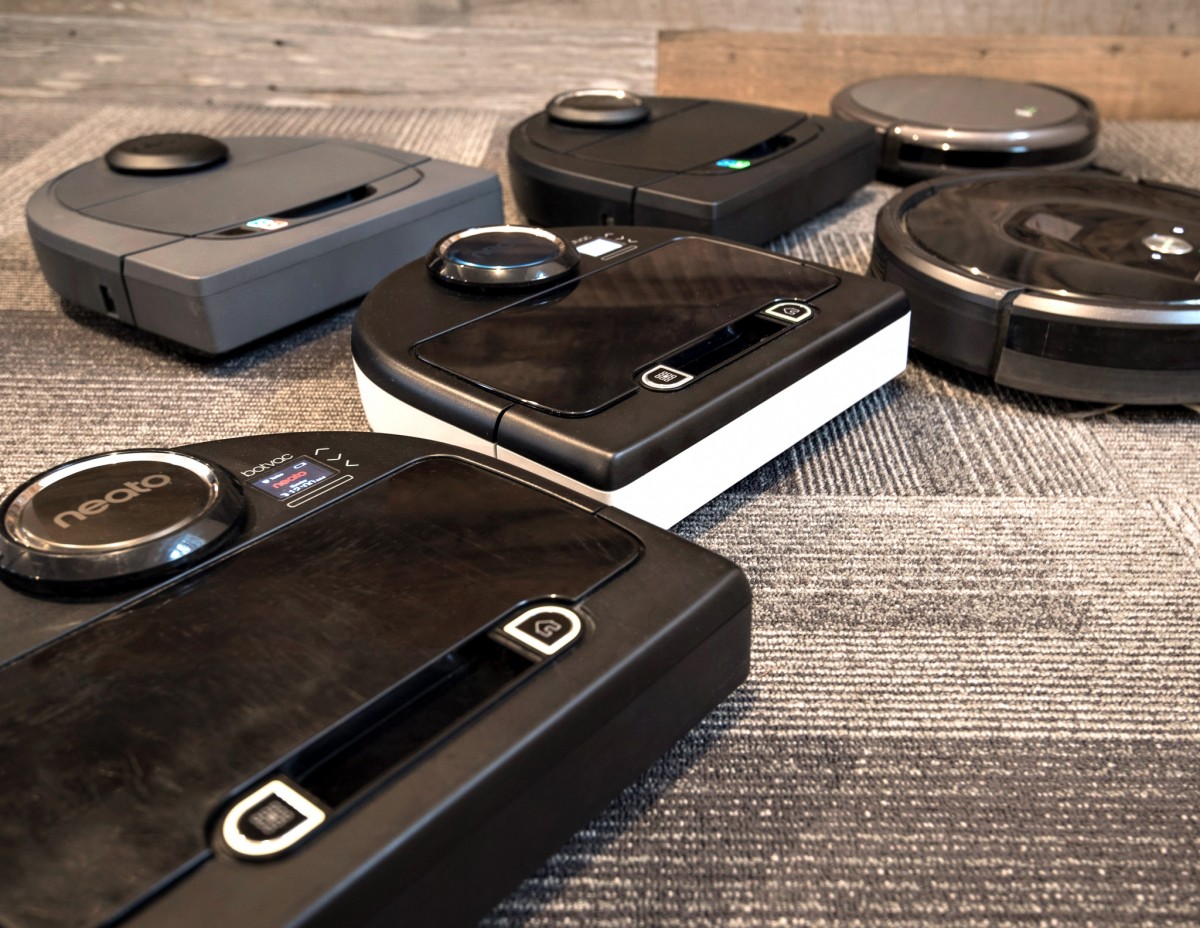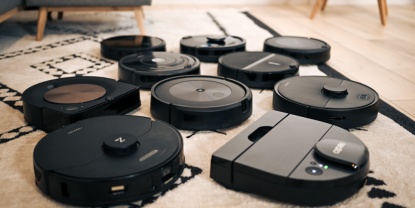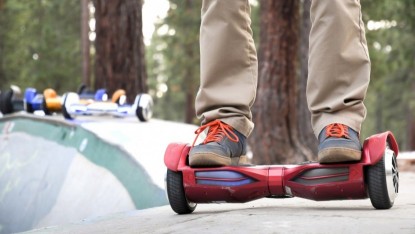Robot vacuum cleaners are all the rage these days and some of them work really well. But which one is the best for your situation? We purchased 11 of the leading models to find out which really is the best robot vacuum in our detailed review. Keep reading to learn whether you should even vacuum in the first place, if you should toss out your manual vacuum, and which robotic companion would be the best fit for you and your home.
Why Vacuum?
Why vacuum in the first place? Why have a robotic one?
The first, and most obvious, reason to vacuum is aesthetics. Regular vacuuming any type of floor will improve the appearance of your floors, picking up stray dirt and dust. Flooring experts say that regular vacuuming can dramatically increase the air quality of your home and have many health benefits. Vacuuming can also increase the life of your carpet, freeing trapped particles that over time could be ground deep into the carpet, abrading the fibers and damaging the floor. The next thing you might wonder is this, how often should I vacuum?
The advice on frequency could be disheartening. It is to vacuum most likely more than you currently do. Experts in the field recommend that you vacuum at least once a week, potentially two to three times a week if your home has high traffic, pets, or has lots of dirt and grime tracked in. This is why a robot vacuum cleaner even exists. Next question:
Do You Need a Robot Vacuum Cleaner?
So, robot vacuums are mainly for those who put off vacuuming as much as possible and would be happy to delegate the task to a robot.
Can a Robot Replace an Upright?
Unfortunately, there is a key fact to remember: none of the robot vacuums is a perfect replacement for a good upright or canister vacuum. They just don't have the power or capacity to take care of, say, pet hair after going at it with the dog clippers. Do not expect to buy a robot and throw away your manual model. If you need truly immaculate floors and currently vacuum at least once or twice a week, then a robot vacuum is probably not a purchase you should make. Your money would probably be better spent on a higher-end conventional vacuum. However, a robot vacuum can still be an extremely helpful addition to your home, and probably will make it cleaner overall. Robot vacuums are intended to do a frequent cleaning job, thus prolonging the time between required deep cleans with a manual system. This is the main argument for why you should buy a robot vacuum: Having your floors cleaned acceptably well on a daily basis will probably yield a higher overall level of cleanliness than a deep cleaning with a good upright or top-rated canister vacuum every few weeks.
If you believe that a robotic vacuum is a good fit for your situation, then here are your options:
Types of Robot Vacuums
Electrolux introduced the first "Robotic Vacuum Cleaner," the Trilobite, in 1996. It cleaned well but frequently collided with objects and stopped short of walls and other objects, and also left small areas not cleaned. As a result, it failed in the market and was discontinued. It was followed by the iRobot Roomba in 2002 that led to an explosion of popularity for automated cleaners. There is an enormous price range, from $20 to $1000. The least expensive models, usually retailing for less than a $100, are marketed at robotic dusters, robotic floor cleaners or sweepers. Moving up in price, the most expensive robot vacuums have sophisticated navigation systems, map the room as they clean, have multiple stage cleaning systems, and automatically dock, charge and resume progress when necessary. We have split all these products into three categories.
Robotic Dusters
Think of these low-cost items as a novelty item, something to do a random wipe or sweep of a floor rather than a reliable clean. These might have merit for the buyer on an extreme budget or someone living in a small studio with hard flooring only. While we don't recommend them, these are products that we consider to be merely Robot Dusters:
- Pyle Pure Clean
- RoboMop SoftBase Robotic Floor Sweeper
Robot Mops
These robot mops may be a viable option if your home is entirely hard surfaces, and doesn't have any major mess generators (pets, kids, etc.). However, we don't feel comfortable recommending them as we have not tested them yet. We base our opinion on generally lackluster user reviews on major retailing sites. We believe Robotic Mops are not ready for prime time, and are inappropriate if your home has carpeting, as most of them do.
Robot Vacuums
The next group of automatic cleaners are the robotic vacuums. The defining feature of these is they have both a floor cleaner brush, with bristles or plastic blades, and provide suction to actually vacuum your floors. These work on all types of floors and collect the dirt and debris they pick up in a collection bin. There is a wide range of capabilities and features and a massive price spread, from $200 to $1500. This class of products is the most versatile, with different makes and models, each having a unique blend of cleaning tools, sensors and navigation software, each leading to better performance in certain situations. We reviewed the top Robot Vacuums, which we consider to be the most pragmatic category.
The next step toward picking which model to buy is to take a detailed look at your home, specifically what areas you expect to clean and the type of floors in those areas.
How to Pick the Right One
Step 1: What are You Standing On?
If you plan on cleaning any carpeted floors, then a Robot Vacuum is the only sensible path forward. Most models can cope with low-pile carpet, but if you have fluffy, medium pile carpet, then consider the highest-powered suction model that you can afford. Suction is usually measured in watts and will generally be in the range of 15 to 30. Check our specs section of the main review for details on the suction power of each model we looked at. If you plan to clean some high-pile, shag carpet, then you may be out of luck. We withhold judgement on the aesthetics of shag carpet, beloved icon of the 70s, but we can say that robot vacuums struggle with carpet that fluffy and will not be worth the investment. Consider spending on a heavier duty manual vacuum.
We recommend the Robot Vacuum class of products for almost every application, except the aforementioned shag carpet; they can handle most floor types, as well as cope with concentrated areas of mess.
Only if your house consists of only hard flooring should the robot mops be considered. With hardwood or linoleum, a mopping model that uses a cleaning wipe should be sufficient. It the surface is more varied — think a tile floor with grout lines — then look at a robot mop that also features a rotating brush head. We don't feel comfortable recommending these until we have tested them ourselves or the reviews on retailing sites improve.
Step 2: What is in the room that you want to clean? How many rooms?
In what domain will your little robotic friend soon roam? Single room studio? Multiple room house? Office floor with cubicles? One large room divided with a sofa?
The navigation and sensor package determine how efficiently a robot will be able to maneuver and clean. Some models are marketed as multi-room capable, while others are restricted to a single room only.
If you are looking at cleaning a simple, small room, or you feel fine manually moving the robot and docking station between rooms, then one of the mid-range models that uses semi-random navigation would be more than adequate. By simple, we mean the room is essentially a square or rectangle. Having a single room divided by a large piece of furniture can make it very difficult for single room robots to find their base and recharge, requiring constant rescue missions from you.
If you are looking at cleaning an extremely large room, or multiple rooms, then consider a robot that will systematically map the room, something present on most higher end models. These will usually begin by doing a 360-degree scan of the room, then navigating along the perimeter, finally completing the bulk of the room with a back and forth lawnmower pattern. They will keep track of areas cleaned, recharge as needed and resume cleaning where they left off. Hopefully, you have narrowed down your search to a few top contenders and are looking at the additional features to separate them. The Neato Botvac Connected and the iRobot Roomba 980 are good candidates.
Step 3: Features or Fluff?
Robot vacuum technology has come an incredibly long way in the past two decades with a plethora of features on all models. Some features prove extremely useful while some seem more like fluff. After you have settled on one or two contenders, look at which additional features each of those models offers.
There are two features that we recommend. The first is the ability to automatically locate and recharge itself and then resume cleaning if necessary. The entire point of getting one of these products is to minimize the effort to clean your home. So the best products will give you confidence that they are dutifully cleaning while you are away. The second desired feature is the ability to set a schedule. These two features, coupled with some careful setup of your home and the removal of obstacles, will allow you to get the most out of your robotic companion.
Another extremely useful feature is the ability to cordon off "Do Not Enter" areas. Some models offer a physical barrier strip, while some make an invisible barrier to signal the machine to turn around. Most people will have some areas of the home that will continually trip up any robot vacuum — for example a charging cord, or an area where shoes are kept. All models made by Neato and iRobot that we reviewed have this feature.
All these features help the robot clean more effectively and automatically. We caution against spending more for other features.
What Is the Ideal Robot Vacuum?
Basically you want a model that will clean floors, avoid getting trapped or damaging anything, and make its way back to the docking base to recharge. You want your robot to be self-reliant and to excel at navigating rooms and around furniture. The ideal robot vacuum would be one that we could essentially ignore for most of the time, merely stopping daily to empty the collection bin and weekly to clean off the filters. The worst-case scenario would be having to rescue the robot on a daily basis, ending up with so much frustration that you just quit using the thing.
Our full review compares the top-rated robot vacuums available. See our detailed review to find which model is best for you.


















